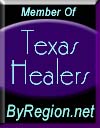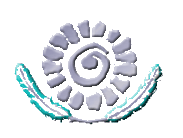 |
||||||||||||||||||||||||
|
|
||||||||||||||||||||||||
 |
||||||||||||||||||||||||
 |
||||||||||||||||||||||||
|
||||||||||||||||||||||||
 |
 |
|
Stroke / TIA Stroke or Cerebrovascular Accident (CVA) is a term that is used to describe an event, which causes brain circulation to fail and a loss of brain function in a specific area. This means that either an artery has begun to bleed or it has become blocked by plaque or a blood clot that has broken loose from another area. Because the brain controls so many things in the body, it may cause a wide variety of symptoms ranging from weakness to paralysis, slurred speech to an inability to speak, mild disorientation to confusion and every degree of impairment in between. It may affect the gross and fine motor skills, vision, speech, mental abilities, memory or a combination of these things depending on exactly which brain cells have been affected during the event. Stroke is the third leading cause of death in the United States and the second leading cause worldwide. Only heart disease and cancer take more lives in the US. Someone suffers a stroke every 53 seconds and over 300,000 men, women and children in the US suffer strokes each year. Stoke or "brain attack" is a major cause of disability among adults and costs the US over $30 billion dollars in medical and other costs. While it is a disease of the brain, it affects the entire body. More than one fourth of neurologically impaired patients in nursing homes are stroke victims. While many people consider stroke victims to be older adults, the truth is that stroke may occur in people of any age. The brain requires a minimum of 20% of the entire output of fresh oxygenated blood and glucose (blood sugar) each time the heart beats. Only a few seconds without oxygen and important nutrients delivered by the blood can damage or kill brain cells and tissues. Sometimes, cell damage may be reversed. Since many cells of the brain are not used on a daily basis, therapy and retraining may use those cells to regain skills that have been lost with those cells that were damaged or killed during a stroke. There are three major types of stroke: Thrombotic strokes are caused by plaque (fatty deposits) that has built up on the lining of the arteries carrying blood to the brain. This slows the flow of blood, which carries oxygen and vital nutrients to the cells and removes waste products from those same cells. If the plaque becomes thick enough, it can stop the flow of blood entirely, causing cell damage and death. Embolic strokes are caused by a blood clot (called an embolus) that formed in another part of the body that breaks loose, travels through the bloodstream and blocks an artery in the brain. The result is the same as in the thrombotic stroke once the artery is blocked. The third type of stroke is called hemorrhagic. It is caused when an artery supplying blood to the brain begins to bleed into the brain. The break in the blood vessel prevents the needed oxygen and nutrients from reaching the brain cells. Newborns most often suffer from hemorrhagic strokes. In older people, over time the walls of some blood vessels may become weak and the blood pushing against the weakened wall may cause it to bulge. That is called an aneurysm. Eventually, the wall may become so weak that it will burst depriving some cells of blood flow while allowing blood into other areas of the brain. Strokes require immediate medical attention. Since there is rarely pain associated with a stroke, most people delay seeking medical treatment. Research has shown that proper treatment during the first few hours after a stroke is important for the best possible recovery. The longer treatment is delayed, the more brain damage may be done. Medical attention may consist of stopping internal bleeding, controling blood pressure, increasing oxygenation of the body, etc. Doctors diagnose strokes both from the symptoms and studying the patient's medical history, as well as using tests such as spinal taps, arteriograms, magnetic resonance imaging (MRI) or computerized tomography (CT) scans, which are a 3-dimensional x-ray of the brain. Some people may suffer a lethal stroke but in most cases the individual survives. In those cases, there may be varying levels of neurologic and psychologic damage. In some people, the impairment may be very slight and hardly noticed even by the victim. However, other people may be rendered completely brain damaged. Risk of stroke increases with age. Therefore, as people age, they need to become more attentive to those things they can control. High blood pressure, high cholesterol, smoking, heart disease, using oral contraceptives, migraines and diabetes are strains on the vascular system of the body, which may lead to increased risk of stroke. Men tend to suffer more strokes than women, possibly because they take fewer precautions. However, more women die of strokes than do men. Blacks also suffer more strokes than whites. All people may reduce their risk of stroke by paying more attention to their health, following a healthy lifestyle and controlling health conditions. An important warning of stroke is called a mini-stroke or a TIA (transient ischemic attack). They do not last long and may appear as a sudden numbness or weakness in the face or limb of the body. It may appear only on one side of the body. It may also appear as a sudden confusion, trouble speaking, or understanding. There may be trouble in seeing from one or both eyes, trouble walking, loss of balance or coordination. There may be sudden dizziness or headache. These things should not be ignored. Studies show that 5% of people over 65 have suffered some type of stroke. Medical attention should be sought to determine stroke related incidents as quickly as possible. In recent years, death from stroke has declined almost 50% due to healthier lifestyles, more exercise, and more prompt medical attention. While most strokes happen suddenly, they may occur gradually over one or two days and be signaled by TIA's with a gradual onset of symptoms. Therefore, it is important not to ignore the warning symptoms in order to minimize damage and achieve the most complete recovery. Children may suffer symptoms similar to those in adults, but there are some significant differences. Children, especially those under 4 years of age, frequently have seizures at the onset. They may experience a loss of expressive language, paralysis on one side of the body, speech impairment, convulsions, headache and/or fever. Children who suffer a sudden weakness on one side of the body and/or a sudden loss of speech should see a doctor immediately. The sooner a stroke is diagnosed in a child, the better the chance of a full recovery. Stroke rehabilitation should begin as soon as possible after the patient is stable and continue after they have been released from the medical facility. Two thirds of stroke victims are left with a major disability including paralysis, speech loss, or memory loss and need help caring for themselves. A team of health care experts should be assembled to coordinate the activities of the patient and family to address the physical, emotional, and mental results of the stroke. Windsong Therapy is an expert at stroke rehabilitation. Many therapists look only at the limb or skill that has been lost during the stroke and address all therapy to that area. We look at the whole body. A body that is balanced gains strength much more easily and quickly. We then concentrate on making the patient aware of their body and giving them tasks to do on a daily basis to improve their ability to function as a whole and resume a rewarding life. Each patient is individual and has had a very unique experience in their lives and will experience a different rate of healing. We recognize those unique emotions and motivations and work with the patient to restore the life they want.
Web Resources: National Stroke Association American Stroke Association |
| [Home] |
|
This website last updated on 31 July 2010 This website is entirely funded by Windsong Therapy and Wellness, Inc. |
|
Disclaimer: Confidentiality of data relating to individual patients and visitors, including their identity, is respected by this Web site. The owners of this Web site undertake to honor or exceed the legal requirements of medical / health information privacy that apply in Texas and the United States. The information on this Web site is Copyright © 1999-2008 Windsong Therapy and Wellness, Inc. Please obtain permission from Windsong Therapy and Wellness, Inc. before reproducing any information from this Web site. |